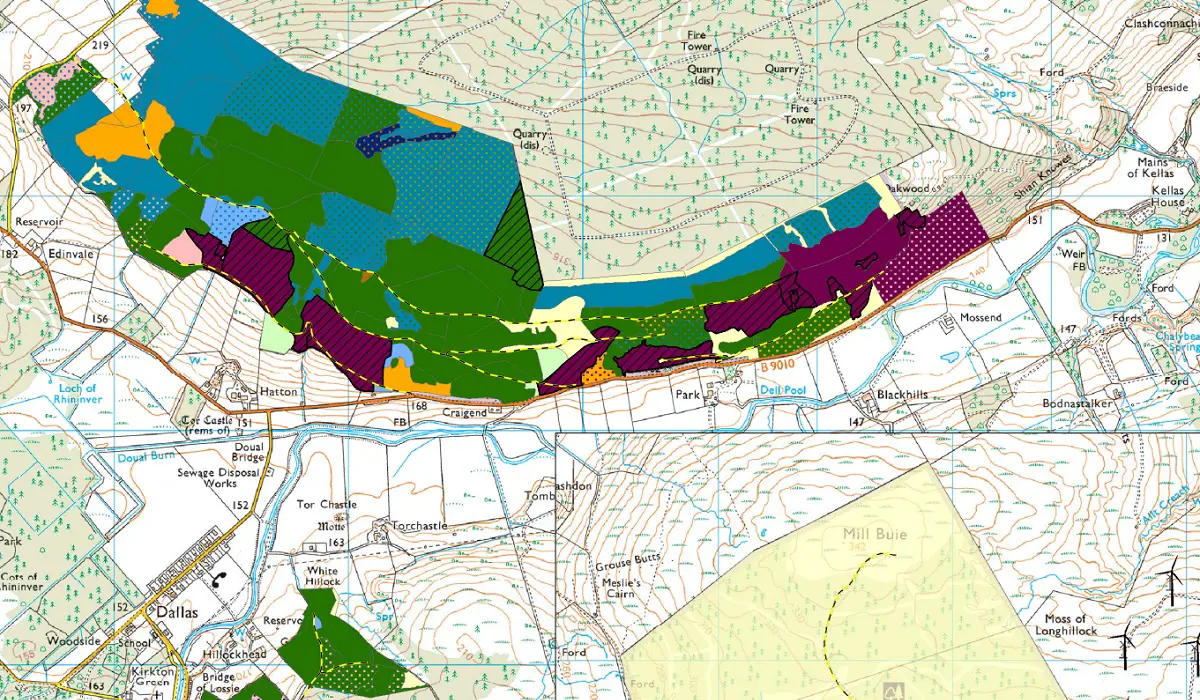Planning our land management
Planning our land management
Our vision is to look after Scotland’s forests and land, for the benefit of all, now and for the future. We therefore take long term planning very seriously, ensuring our resources are best allocated to contribute to improving the environment, economy, health and wellbeing of the nation in a sustainable way.
On this page, you will find details of plans both high level and local level, and how they apply to our work.
Corporate planning
Our Corporate Plan gives overall direction to the work that we do managing Scotland's national forests and land. It is supported by our Business Plan, which sets out how we will achieve the objectives identified in the Corporate Plan.
You can read each document at the following links:
Standards and strategies
All of our land management is carried out to the standards and requirements of the UK Forestry Standard – the UK’s reference standard for managing forests sustainably. It is carried out under Land Management Plans (see below) approved by Scottish Forestry, the Scottish Government’s agency responsible for forestry policy, support and regulations.
In addition, all of our forests are independently certified as being responsibly managed against the United Kingdom Woodland Assurance Standard – a standard for sustainability which is endorsed by the Forest Stewardship Council (FSC) and the Programme for the Endorsement of Forest Certification (PEFC). This means that all the timber we sell can be badged with these internationally-recognised marks of sustainability.

We have a number of internal plans and strategies to guide our work:
- Deer Management Strategy
- Open Habitat Strategy
- Restocking Strategy
- Tourism Strategy
- Woodland Creation Strategy
Land management planning
A land management plan sets out how we intend to manage a specific area of land for a period of ten years. Usually the area covered by a plan is a forest or woodland but it will often include open areas too.

We work closely with local communities to ensure these forests balance the economic benefits of jobs and timber production with the social and environmental benefits of being pleasant, welcoming places to visit.
Have your say
When we develop a land management plan, we gather views from a range of different stakeholders. However, we are particularly interested to hear what local people think. This helps us to balance and prioritise the sometimes competing objectives. You can check for open consultations in your area and have your say at the following link:
Active plans
After a public consultation is complete, views are gathered together and submitted with the updated draft plan to the local Scottish Forestry office for formal approval. The plan is also placed on Scottish Forestry's Public Registers where you can continue to comment for 28 days. Once approved, all plans are then published at the following link:
Operational site planning
Before we undertake each of the forest operations set out in the Land Management Plan, including tree felling, our staff follow processes and procedures designed to ensure work is carried out safely and competently.

We consult internally with all specialist teams to ensure that any matters relevant to the work are taken into account as the job is planned. We need to make sure that the operation is safe, legal, and carried out to the correct standards, and that any neighbours or forest users who will be affected by the work are notified. We start this operational planning many months or years in advance, as some of the mitigation measures may take a long time to organise. For example, power line shutdowns can take time to agree; or our Environment staff, working to Scottish Forestry’s Guidance on Managing Forest Operations and Wildlife, may need to do surveys at particular times of year, and may advise that we adjust the timing of operations, exclude certain areas or change the nature of the operation to avoid impacts on protected species.
Closer to the time of the operation we undertake pre-operational surveys, particularly to ensure that we are aware of any wildlife constraints that might have changed since the work was planned.
During operations we take opportunities to improve habitats for rare and priority species.